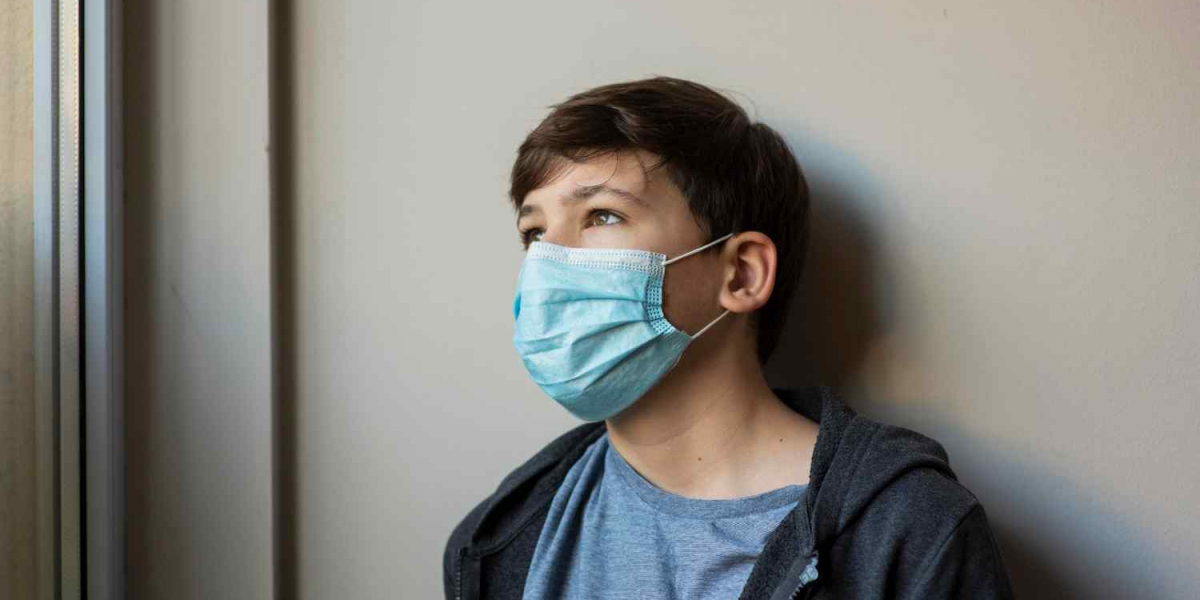Key Takeaways:
Youth anxiety and stress have risen since the pandemic, affecting daily life
Parents and schools are key in recognizing and addressing mental health issues
Resilience-building strategies can help youth manage stress and regain stability
It's hard to deny the lasting impact of the COVID-19 pandemic, especially when it comes to the mental health of young people. Many of us have adjusted to a "new normal," but for today’s youth, the psychological effects of the pandemic—particularly stress, anxiety, and isolation—are still deeply felt.
A recent study found that over 40% of teens report feeling more anxious and stressed since the COVID-19 pandemic began, with many saying they struggle to cope with everyday pressures.
The COVID-19 pandemic caused significant disruptions to young people's daily lives. School closures, social distancing, and the shift to online learning broke familiar routines and limited face-to-face interactions.
As a result, many teens felt isolated and disconnected from their friends and support networks. These changes had a serious impact on their emotional development, leading to increased levels of stress, anxiety, and even depression.
In this article, we’ll take a closer look at how the pandemic has impacted the youth mental health and young adults. We’ll explore the warning signs of stress and anxiety that parents and caregivers should be aware of and discuss ways to provide the support that today’s youth need to heal and thrive.
By understanding the challenges our youth face and taking proactive steps, we can help them regain confidence, resilience, and emotional well-being in the post-pandemic world.
What Makes Youth Mental Health Fragile in the Post-Pandemic World?
The COVID-19 pandemic caused significant disruptions to daily life, and young people were particularly affected. Many experienced long-term isolation, changes to their routines, and challenges in adjusting to new learning environments.
Here are some specific ways the pandemic has impacted youth mental health:
- Isolation and Social Skills Regression: With extended isolation, young people missed out on regular social interactions. As a result, many found it harder to socialize, which lowered confidence in navigating friendships and everyday communication. This has contributed to increased levels of social anxiety, particularly in group settings like schools.
- Loss of Routine and Normalcy: The disruption of daily routines—such as the shift from in-person to online classes—left many students feeling disconnected from their school and community. This lack of consistency contributed to heightened stress and uncertainty.
- Academic Pressure and Learning Gaps: During remote learning, many students faced difficulties with focus and engagement, leading to academic gaps. Now, they often feel the pressure to “catch up,” which can create anxiety over grades and performance.
- Family Financial Strain: The economic impact of the pandemic also created added stress in many households. Job losses and financial instability affected not just parents but also young people, who may internalize these struggles and feel additional pressure, further affecting their mental health.
Key Factors Contributing to Post-Pandemic Youth Anxiety and Stress
Many factors that intensified during the pandemic have continued to impact youth mental health:
- Social Media Pressure: With lockdowns and social distancing, young people spent more time on social media, where they were constantly exposed to idealized and carefully curated content. This led to unhealthy comparisons with peers and a distorted sense of reality, fueling feelings of inadequacy and low self-esteem.
- Health Anxiety: The ongoing concern about health and illness has caused many young people to develop heightened anxiety, particularly around germs and public spaces. For some, this anxiety has persisted, making it difficult to feel safe or relaxed in everyday environments.
- Uncertainty About the Future: The pandemic created a sense of uncertainty for many young people regarding their academic future, career plans, and even the stability of the world around them. This lack of clarity has fueled worries about their future and security, adding an additional layer of anxiety that often remains unaddressed.
- Family Tensions: Extended periods of time spent in close quarters during lockdowns put significant strain on family relationships. Many teens experienced increased family conflicts, which created a lasting sense of unease and affected family dynamics, further impacting their emotional well-being.
How does stress and anxiety appear in young people?
- Observable Symptoms: Youth struggling with mental health challenges often display physical signs like headaches, digestive issues, and sleep disruptions. They might also express irritability or detachment from activities they once enjoyed.
- Behavioral Shifts: Some teens may turn to excessive screen time, spending long hours on digital entertainment or video games as a way to cope with stress. Others might experience a drop in academic performance or lose interest in social activities, reflecting a lack of motivation or emotional strain.
- Social Withdrawal and Loneliness: Students may avoid social gatherings or exhibit unusual behaviors, like eating alone or spending time in isolation. These behaviors often stem from feelings of unworthiness or anxiety around social interaction, which can further isolate them from support networks.
Consequences of Untreated Youth Stress and Anxiety
Ignoring youth mental health issues can lead to severe consequences:
- Academic Decline: Stress often manifests as school avoidance, absenteeism, or disengagement in class, impacting grades and future opportunities. Left unchecked, this can increase the risk of school dropout.
- Long-Term Mental Health Concerns: Anxiety disorders, depression, and other mental health challenges become more likely without early intervention, leading to a potential need for prolonged mental health support.
- Increased Social Isolation: As youth avoid social settings, they risk reinforcing a cycle of loneliness and insecurity, which can hinder their ability to form positive relationships in the future.
Strategies for Addressing Stress and Anxiety in Youth
Effective strategies can help youth manage stress and anxiety, building resilience and emotional well-being. Here are some practical approaches for supporting their mental health post-pandemic recovery.
- Parental and Community Support: Parents play a vital role by actively listening, validating feelings, and creating a safe space for youth to open up. Conversations about daily stresses and struggles can make a significant difference in a child’s resilience.
- School-Based Mental Health Initiatives: Schools can incorporate Social and Emotional Learning (SEL) programs, offer peer support groups, and provide access to counselors to help students process and manage emotions.
- Therapeutic Interventions: Professional approaches like Cognitive Behavioral Therapy (CBT), mindfulness practices, and resilience training can empower young people to cope effectively with their stress and anxiety.
- Peer Support and Mentorship Programs: Youth-led support programs can encourage connection and empathy. By fostering friendships and support systems, young people are more likely to build the social confidence they need.
How Youth Can Build Resilience in a Post-Pandemic World?
- Healthy Coping Mechanisms: Engaging in activities like journaling, creative hobbies, and physical exercise can serve as effective outlets for emotions and help reduce stress. These healthy habits not only support mental well-being but also encourage a balanced, fulfilling life by providing ways to manage difficult feelings.
- Screen Time Management: Given how much time young people spend online, learning to manage screen time is essential. Setting boundaries on digital use and promoting digital literacy can help teens find a healthier balance between online and offline activities, fostering more meaningful real-life interactions and reducing the risk of digital dependency.
- Building Self-Confidence and Independence: Encouraging teens to make their own decisions and take on challenges—whether big or small—helps build self-confidence. Developing a strong sense of independence strengthens their resilience, equipping them to handle life's challenges with greater ease and emotional stability.
Conclusion
The mental health of our youth is paramount, and the rise of stress and anxiety in post-pandemic youth is a reminder of the need for greater attention to youth mental health. Both parents and schools have crucial roles in offering support, understanding, and the resources needed to address these challenges. With a supportive environment and appropriate interventions, youth can navigate these complex emotions, rebuild resilience, and move toward a healthier future.
Parents, educators, and communities must unite in addressing this silent epidemic. As we help young people rebuild their confidence and resilience, we not only support their mental well-being but also create a future generation that is strong, stable, and hopeful.









